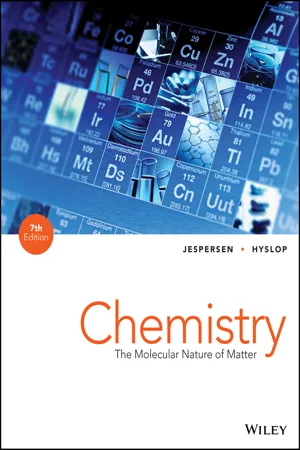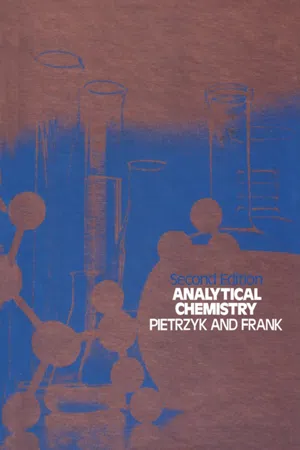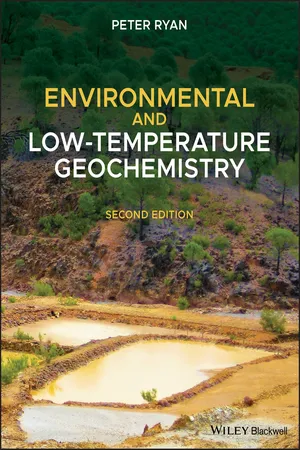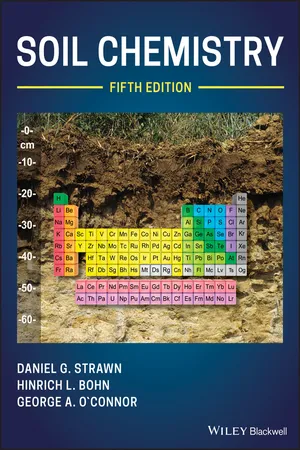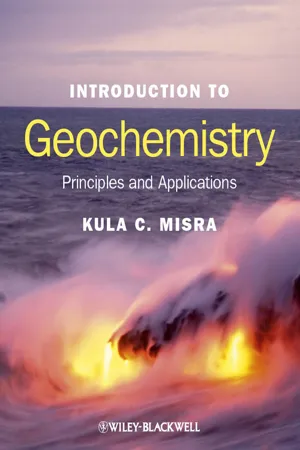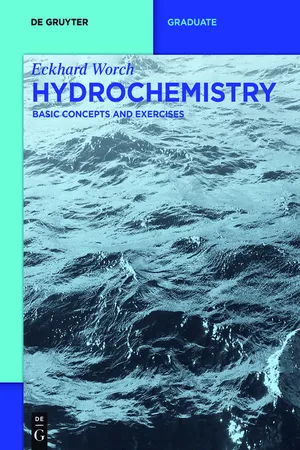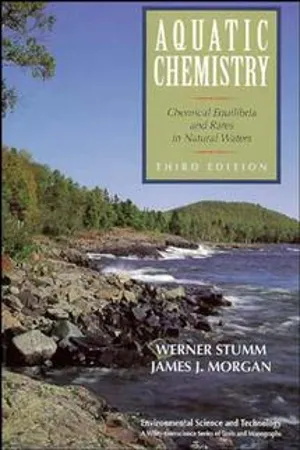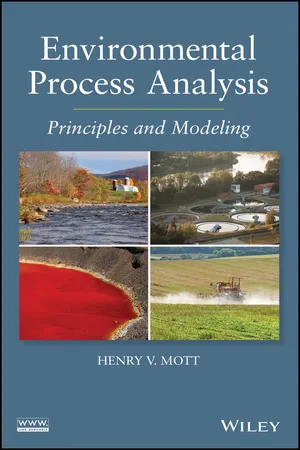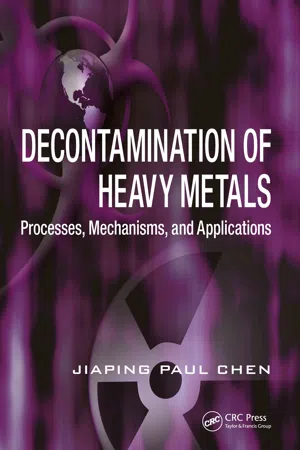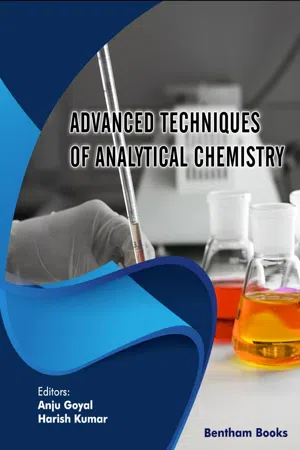Chemistry
Redox Reactions
Redox reactions involve the transfer of electrons between chemical species. The substance that loses electrons is oxidized, while the one that gains electrons is reduced. These reactions are fundamental in various chemical processes, including energy production, corrosion, and industrial synthesis.
Written by Perlego with AI-assistance
Related key terms
Related key terms
1 of 4
Related key terms
1 of 3
12 Key excerpts on "Redox Reactions"
- eBook - ePub
Chemistry
The Molecular Nature of Matter
- Neil D. Jespersen, Alison Hyslop(Authors)
- 2018(Publication Date)
- Wiley(Publisher)
Chapter 19 to discuss some of the others.LEARNING OBJECTIVES
After reading this chapter, you should be able to:- define oxidation, reduction, oxidizing agents, reducing agents, and oxidation numbers
- balance equations for oxidation–reduction reactions in acidic or basic solutions
- illustrate, at the molecular level, how a metal reacts with an acid
- explain the activity series of metals and use it to predict the product of a redox reaction involving a metal
- describe the reaction with oxygen of organic compounds, metals, and nonmetals
- perform calculations involving stoichiometry of a redox reaction
5.1 Oxidation–Reduction Reactions
Among the first reactions studied by early scientists were those that involved oxygen. The combustion of fuels and the reactions of metals with oxygen to give oxides were described by the word oxidation. The removal of oxygen from metal oxides to give the metals in their elemental forms was described as reduction.- Oxygen had just been discovered by Joseph Priestley in 1774.
In 1789, the French chemist Antoine Lavoisier discovered that combustion involves the reaction of chemicals in various fuels, like wood and coal, not just with the air but more specifically with the oxygen in air. Over time, scientists came to realize that such reactions were actually special cases of a much more general phenomenon, one in which electrons are transferred from one substance to another. Collectively, electron transfer reactions came to be called oxidation–reduction reactions , or simply Redox Reactions . The term oxidation was used to describe the loss of electrons by one reactant, and reduction to describe the gain of electrons by another. For example, the reaction between sodium and chlorine to yield sodium chloride involves a loss of electrons by sodium (oxidation of sodium) and a gain of electrons by chlorine (reduction of chlorine). We can write these changes in equation form including the electrons, which we represent by the symbole − - eBook - ePub
- Clyde Frank(Author)
- 2012(Publication Date)
- Academic Press(Publisher)
Chapter TenOxidation–Reduction Equilibria
Publisher Summary
An oxidation-reduction reaction (redox) is one in which the reactants undergo changes in the oxidation state. The gain of electrons is a reduction process, while oxidation is the loss of electrons. Both processes occur in a redox reaction. Reduction does not take place in the absence of oxidation or vice versa. The total number of electrons lost is equal to the total number of electrons gained. The substance that decreases in the oxidation state is the oxidizing agent, while the substance that increases in the oxidation state is the reducing agent. An oxidizing agent causes another substance to be oxidized, while it itself is reduced. In contrast, the reducing agent causes another substance to be reduced, while it itself is oxidized. This chapter discusses the arrangement of oxidizing agents and their reduced forms according to their ability to gain and lose electrons. The chapter also illustrates an arrangement of a selected group of half-reactions, which is called the Table of Standard Reduction Potentials.DEFINITIONS
An oxidation–reduction reaction (redox) is one in which the reactants undergo changes in oxidation state. In reaction (10-1),(10-1)which is also a suitable reaction for the determination of iron, cerium changes its oxidation state from 4+ to 3+, a gain of one electron, while iron changes from 2+ to 3+, a loss of one electron.A gain of electrons is a reduction process, while oxidation is a loss of electrons. In a redox reaction both processes must occur. Reduction cannot take place in the absence of oxidation or vice versa. In addition, the total number of electrons lost must equal the total number of electrons gained.The substance that decreases in oxidation state is the oxidizing agent; the substance that increases in oxidation state is the reducing agent. An oxidizing agent causes another substance to be oxidized, while it itself is reduced. In contrast the reducing agent causes another substance to be reduced, while it itself is oxidized. - eBook - ePub
- Peter Ryan(Author)
- 2019(Publication Date)
- Wiley-Blackwell(Publisher)
4+ ), where the change from one oxidation state to another involves gain or loss of electrons. Electron transfer associated with Redox Reactions is energy for microbial organisms, so when we think about Redox Reactions, we must consider the potential influence of microbial activity.1.8.1 Defining oxidation and reduction
Oxidation refers to the loss of electrons by an atom. Two common examples are the oxidation of iron from its ferrous state (Fe2+ ) to its ferric state (Fe3+ ) by loss of one electron, and of nitrogen from N3+ to N5+ by loss of two electrons. These two reactions are represented as follows:1.221.23Where do those liberated electrons go? They probably were pulled away from the oxidized atom because a neighboring atom had a greater attraction for those valence electrons. The oxidation of one atom cannot occur without a corresponding change to another atom. This change is reduction and it takes place when an atom gains electrons.Two common examples are the reduction of oxygen gas (where the oxidation state of oxygen is O0 ) to oxygen anions (O2− ), and of C4+ (e.g. the C in CO2 and CaCO3 ) to molecular carbon, C0 (e.g. the oxidation state of C in some forms of organic matter).1.241.251.8.2 Redox Reactions
While it is useful to examine individual examples of reduction or oxidation, loss of electrons from one atom results in gain of electrons for another atom. A simple example is the oxidation of iron metal (Fe0 ) to iron oxide (Fe2 O3 ) where Fe occurs in its trivalent or ferric state (Fe3+ - eBook - ePub
- Daniel G. Strawn, Hinrich L. Bohn, George A. O'Connor(Authors)
- 2019(Publication Date)
- Wiley-Blackwell(Publisher)
5 Redox Reactions IN SOILS5.1 Introduction
In reduction and oxidation reactions, atoms exchange electrons causing changes in oxidation states and chemical species, and thus dramatically change the behavior of chemicals in soils. Redox Reactions can be abiotic or biotically driven. In most natural systems, biological reactions have the greatest influence on redox processes. Redox Reactions are fundamental to biogeochemical processes in soils because they influence pedogenesis and change mobility and bioavailability of nutrients and contaminants.Table 5.1shows some of the most common elements involved in redox processes in soils, and their oxidation states.Oxidation is the loss or donation of electrons by an element. Reduction is the gain or acceptance of electrons. For example, the reduction reaction of Fe3+ to Fe2+ , which is an Fe3+ –Fe2+ couple, is(5.1)where e– is a free electron. The reaction inEq. 5.1is a half‐reaction because it does not show where the electron is coming from, and thus describes only half of a complete reaction. Although half‐reactions imply that free electrons exist, the free electron is a theoretical concept that does not occur in nature; the electron is always associated with an atom and directly transferred between ions or molecules. Thus, reduction of one substance requires oxidation of another.An example of an oxidation half‐reaction that provides electrons is oxidation of sulfide to elemental sulfur (S2− –S0 couple):(5.2)This half‐reaction produces two electrons that must be donated to another element in a reducing half‐reaction, which is not shown.Reactions inEq. 5.1andEq. 5.2 - eBook - ePub
Introduction to Geochemistry
Principles and Applications
- Kula C. Misra(Author)
- 2012(Publication Date)
- Wiley-Blackwell(Publisher)
4 ). Oxidation–reduction reactions are important in all geologic processes: magmatic, diagenetic, metamorphic, chemical weathering (e.g., the familiar reddish-yellow rust on iron garden tools), and formation of mineral deposits. In the realm of industrial applications, oxidation–reduction reactions are the basis of electrochemistry (chemical changes produced by an electric current and the production of electricity by chemical reactions), recovery of metals from many types of ores and wastes, and treatment of municipal sewage and industrial effluents.8.1 Definitions
Reactions resulting from addition of oxygen (e.g., 2Ni + O2 = 2NiO) evidently represent oxidation. However, a reaction does not have to involve oxygen to qualify as an oxidation or a reduction reaction.Oxidation is defined as a reaction involving the loss of one or more electrons and reduction as a reaction involving the gain of one or more electrons.Thus, oxidation involves an increase in oxidation state , and reduction a decrease in oxidation state. For the purpose of illustration, let us consider the oxidation of magnetite (Fe2 + O. ) to hematite in the presence of water. Following the convention used by Garrels and Christ (1965, p. 132) and subsequently by many other authors (e.g., Krauskopf and Bird, 1995; Faure, 1998; McSween et al - eBook - ePub
- Eckhard Worch(Author)
- 2015(Publication Date)
- De Gruyter(Publisher)
10 Redox equilibria10.1 Introduction
Redox Reactions belong, besides acid/base reactions, to the most important processes in aquatic systems. The term redox is a combination of the words reduction and oxidation. Oxidation and reduction are reverse reactions and the term redox indicates that they are always coupled. An oxidation is defined as a loss of electrons, whereas reduction means gain of electrons. A number of water constituents are able to take part in Redox Reactions. This means that they can be reduced or oxidized or, in other words, they can change their oxidation state. The change of the oxidation state is typically connected with a change in the properties and in many cases also with a change in the composition of the species. The oxidized and the related reduced species form a redox couple (also referred to as redox pair). Examples of redox couples frequently occurring in aquatic systems are O2 /H2 O, , , , MnO2 /Mn2+ , Fe(OH)3 /Fe2+ , , CO2 /CH4 and CO2 /Cx Hy Oz . The given examples demonstrate that a number of major and minor water constituents are part of redox couples, which underlines the relevance of Redox Reactions in aquatic systems. As we can further see, some species are constituents of different redox couples. This is possible when the considered element occurs in more than just two different oxidation states, such as nitrogen, which can occur in aquatic systems as , , N2 or .To formulate redox reaction equations and to carry out equilibrium calculations, we need a specific parameter that characterizes the oxidation state of a considered atom in a given species. This parameter is known as the oxidation number (or oxidation state). It can be estimated in different ways as will be shown in the next section. For a considered redox couple, the lower value of the oxidation number characterizes the reduced form, whereas the higher value characterizes the oxidized form. If necessary, the oxidation number is written above the symbol of the atom, for instance +5 –3 and NH3 - eBook - ePub
Chemistry
With Inorganic Qualitative Analysis
- Therald Moeller(Author)
- 2012(Publication Date)
- Academic Press(Publisher)
19OXIDATION AND REDUCTION
Publisher Summary
This chapter explores the meaning of the terms “oxidation” and “reduction”. It presents the concept of electrochemistry to make clear the relationships among Redox Reactions and what happens in electrochemical cells. The chapter describes the balancing of redox equations. It presents the understanding and using of standard reduction potentials. The chapter discusses Nernst equation and explains the determination of equilibrium constants from standard reduction potentials. An oxidation-reduction reaction can be thought of as the sum of two half reactions. Each ion-electron equation includes both the oxidized form and the reduced form of the same species. Therefore, a complete redox equation contains at least two oxidants, the electron acceptors and two reductants, the electron donors.In this chapter the meaning of the terms “oxidation” and “reduction” is explored, and just enough electrochemistry is presented to make clear the relationships between Redox Reactions and what happens in electrochemical cells. (The electrochemical cells themselves are discussed in Chapter 24 .) The main additional topics covered are balancing redox equations, understanding and using standard reduction potentials, and the Nernst equation and the determination of equilibrium constants from standard reduction potentials.T“Oxidation” and “reduction” are other words that have undergone changes in meaning. Earlierhe English language, like most others, is constantly changing. Words go out of fashion and disappear, new words are coined as new ideas and materials develop, and, most importantly, well-established words gradually assume new meanings. Consider, for example, the word “tremendous.” It was adapted into our language from a Latin word which meant “to cause to tremble”; that is, “awesome,” “dreadful,” “fearful.” Because we imagine awful and dreadful things to be very large, the word has come to mean “large.” - eBook - ePub
Aquatic Chemistry
Chemical Equilibria and Rates in Natural Waters
- Werner Stumm, James J. Morgan(Authors)
- 2012(Publication Date)
- Wiley(Publisher)
Before we generalize, we should discuss the question: Can we estimate redox reactivity with the help of thermodynamics? A simple affirmative answer would be wrong. But it is often useful to consider thermodynamics, in order to gain some insight into reaction mechanisms and kinetics. Most Redox Reactions are, from a stoichiometric point of view, processes where more than one electron is transferred. But most of these processes occur in a series of one-electron steps. For example, oxidative or reductive transformations of an organic compound require two electrons to yield a stable product. In the majority of abiotic Redox Reactions, the two electrons are transferred in sequential steps. With the transfer of the first electron, a radical species is formed, which is, in general, more reactive than the parent compound. Thus the rate-determining step very often will be the transfer of the first electron (Eberson, 1987).In an example that we have already discussed (Section 11.4), the oxidation of Fe(II) by oxygen is initiated by a one-electron transfer to O2 from a Fe(II) species; thus the radical O is formed:(39)As we have seen, this reaction step is determining for the rate of the overall reaction(40)To investigate or explore LFERs between thermodynamic and kinetic data of redox processes, one should (1) try to interpret the process in terms of elementary (one-electron) reaction steps, and (2) try to identify the rate-determining step.One can then attempt to relate the free energy of the reaction (or the equilibrium constant or the redox potential) of the one-electron step to the rate of the reaction. Extensive tabulations of one-electron redox potentials have recently become available (e.g., Wardman, 1989). Often it is possible to relate rate constants to free energy parameters (ΔGo , K, pεo ) in a series of related Redox Reactions (e.g., oxidation of ions of transition elements with O2 , H2 O2 , MnO2 , Fe2 O3 - eBook - ePub
Environmental Process Analysis
Principles and Modeling
- Henry V. Mott(Author)
- 2013(Publication Date)
- Wiley(Publisher)
12Oxidation and Reduction
12.1 PERSPECTIVE
In Chapters 6 and 10, we examined acids and bases. Then, in Chapter 11, we incorporated our understandings of acids and bases with the named processes of complexation and solubility/dissolution. Our next logical step is to address electron transfers, often called oxidation and reduction or simply redox processes. Elements exist in oxidation states other than their elemental form (in which valence is 0). In the elemental state, of course, the number of electrons in orbitals about the nucleus equals the number of protons held in the nucleus. Elements other than the noble gases tend to gain or lose electrons to render their electron shells more like those of the noble gases. When electrons are gained (the element becomes reduced), the charge becomes more negative, as the number of electrons in orbitals exceeds the number of protons in the nucleus. Conversely, when electrons are donated (the elements become oxidized), the charge becomes positive, as the number of protons in the nucleus now exceeds the number of electrons in orbitals. Then, in the vernacular of the processes, elements that have become reduced become potential reducing agents, as they have the capacity to donate electrons. Conversely, elements that have become oxidized become oxidizing agents as they have the capacity to accept donated electrons.Complicating the whole set of understandings is the fact that once reduced or oxidized, the altered element is most often combined with other elements to form cations, anions, ion pairs, molecules, and crystalline or amorphous solids. One notable exception is sulfur, which when reduced can exist solely as the sulfide ion. When combined with other elements, a further complication exists in that electron pairs are most often shared between dissimilar elements. The electronegativity of each element can help us understand the probability that shared electrons would reside with that element when electrons are shared. The higher the electronegativity, the greater is the probability that shared electrons will reside in orbitals associated with the target element. The chemists have devised descriptions of electron “shells” for various electron-sharing scenarios. We could dig deeply into this probability aspect of the broad and deep topic of electron sharing. Were we to do so, this chapter would be much longer, and perhaps more interesting to selected readers. However, we will not go there. Many chemistry books already contain that information and, if needed, we know how to find it. Our intent here is to become users of the system chemistry has provided for us. The chemists have assembled their collective knowledge about electron transfers into a system, similar in many ways to that of acids and bases. It is this system that we strive to master in order that we may employ it for modeling of environmental processes. - eBook - ePub
Decontamination of Heavy Metals
Processes, Mechanisms, and Applications
- Jiaping Paul Chen(Author)
- 2012(Publication Date)
- CRC Press(Publisher)
5Reduction-Oxidation Processes
5.1IntroductionReduction-oxidation (redox) processes may be defined as the processes that result from Redox Reactions, and can be used for treatment of metallic waste streams or understanding of natural/engineered processes that can change the nature of heavy metals.1 , 2 , 3 , 4 , 5 , 6 , 7 , 8 , 9 , 10 , 11 and 12Depending on the objective, there is always one half-reaction (reduction or oxidation) playing a major role in the process. Table 5.1 shows the important half-reactions.13When reduction is used, heavy metal ions (mono-, di-, or trivalent, M+ , M2+ , or M3+ ) can be converted to metal ions with lower valency or zero-valent metal (M0 ). For example, hexavalent chromium (Cr(VI)) can be reduced to less toxic trivalent chromium in the biosorption process, and monovalent silver ion can be reduced to zero-valent silver by using hydrazine or electroplating.When oxidation is used, heavy metal (with valency of zero or higher) can be oxidized. For example, zero-valent iron as a sacrificial metal can be oxidized, which produces coagulant for the heavy metal removal, a process called electrocoagulation (EC), which is addressed in Chapter 6 . Trivalent arsenic can be oxidized to pentavalent arsenic, which is less toxic and more easily removed from groundwater.Redox Reactions can be further classified into two groups based on the nature of the oxidizing agent (oxidant) or reducing agent (reductant or reducer): chemically induced Redox Reactions and electrochemically induced Redox Reactions. The first type reaction occurs when a chemical is added, which leads to Redox Reactions. The chemical is often in the form of a liquid such as hydrazine. The second type reaction occurs when direct current is applied, which is discussed in Chapter 6 .Redox Reactions play important roles in natural and engineered processes for metal waste management. It is one of the major technologies for metal wastewater treatment. It is particularly suitable for decontamination of metallic waste stream when the concentration is above 1 mM. Redox distinguishes itself from other technologies as it can convert metal ions to the zero-valent form, which can be further processed and used in industries (Table 5.1 - Anju Goyal, Harish Kumar(Authors)
- 2022(Publication Date)
- Bentham Science Publishers(Publisher)
2 ].Principle and Theory
The basic principle involved in redox titration is the oxidation-reduction reactions, in which electron transfer from one reactant to another reactant takes place. Oxidation involved loss of electron and reduction involved gain of electron. These must happen at the same time; when a substance loses electrons, then there must be some other substance to accept those electrons (Fig.Fig. (1)) Showing mechanism of redox titration.).1In the diagram provided above, it is illustrated that an electron was removed from reactant A, and the reactant got oxidized. Likewise, reactant B was handed an electron and thus got reduced. The process of loss of electrons and increase in the oxidation state of a given reactant is called oxidation whereas, gain of electrons and decrease in the oxidation state of a reactant is called reduction. Oxidation state or oxidation number is the total number of electrons either loose or gain by an atom in order to make a chemical bond with another atom. For example, Fe3+ has oxidation number 3, which means it has 3 electrons to make a chemical bond. In the Redox Reactions, the compounds that accept electrons and endure reduction are called oxidizing agents. The electron donating species that surrender electrons, termed as reducing agents, go through oxidation. From these details, it can be demonstrated that Redox Reactions can be fragmented into two half, reduction half reaction and the oxidation half reaction.Examples: The assay of FeSO4 using ceric sulphate. The equation involved in the reaction is:Fe2+ + Ce4+ → Fe3+ + Ce3+2FeSO4 + 2Ce(SO4 )2 → Fe(SO4 )3 +Ce2 (SO4 )3This equation can be fragmented into two half, one half represented by ferrous ion which lose electrons and the other half shown by cerric ion which gains electrons. Oxidation means loss of electron, removal of hydrogen and addition of oxygen.- eBook - ePub
- Jeffrey Gaffney, Nancy Marley(Authors)
- 2017(Publication Date)
- Elsevier(Publisher)
a battery that cannot be returned to its original state by rechargingReducing agent the reactant in an oxidation-reduction reaction that loses electrons.Reduction the gain of electrons by a reactant in an oxidation-reduction reaction.Salt bridge a device used to connect the half cells of a galvanic cell in order to provide electrical contact between the two cells.Secondary battery a battery that can be returned to its original state by the application of an external electric current that reverses the oxidation-reduction reactions.Standard cell potential (E 0 )a cell potential measured under standard state conditions.Standard half cell potential the difference between the potential of the half cell and the potential of the standard hydrogen electrode.Standard hydrogen electrode (SHE) the half cell that is used as a reference, with an assigned potential of 0 V, against which all other half cell potentials are measured.Standard oxidation potentials the standard half cell potential for the oxidation half cell.Standard reduction potentials the standard half cell potential for the reduction half cell.Wet cell a battery that uses a liquid electrolyte, usually an aqueous salt.Study Questions
10.1 What is an oxidation-reduction reaction?10.2 What is oxidation?10.3 What is reduction?10.4 What is an oxidizing agent?10.5
Index pages curate the most relevant extracts from our library of academic textbooks. They’ve been created using an in-house natural language model (NLM), each adding context and meaning to key research topics.
Explore more topic indexes
Explore more topic indexes
1 of 6
Explore more topic indexes
1 of 4
